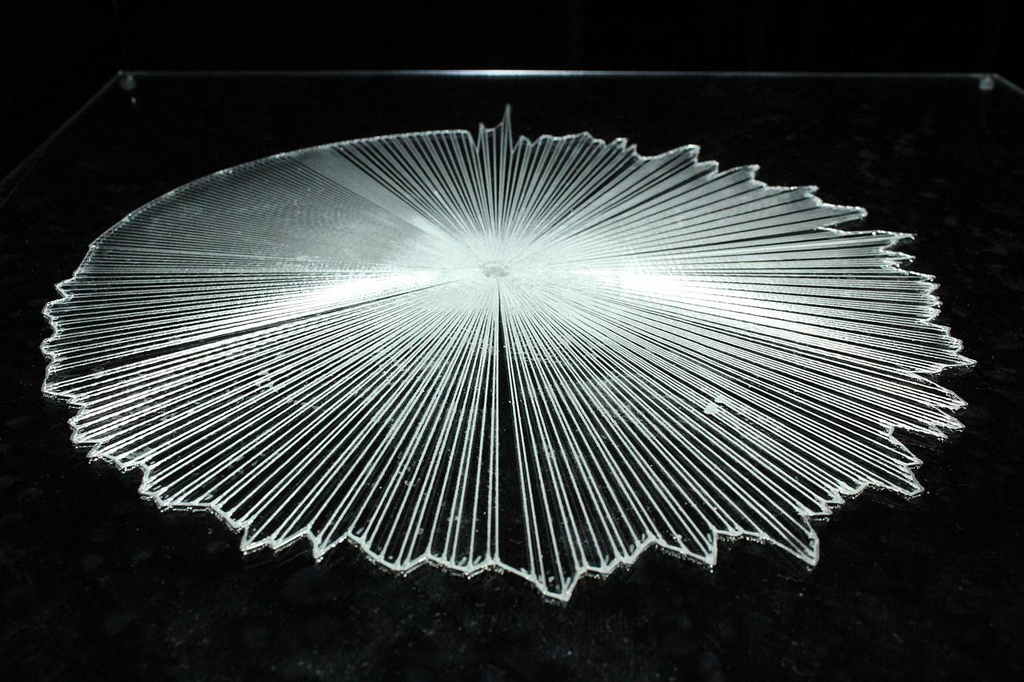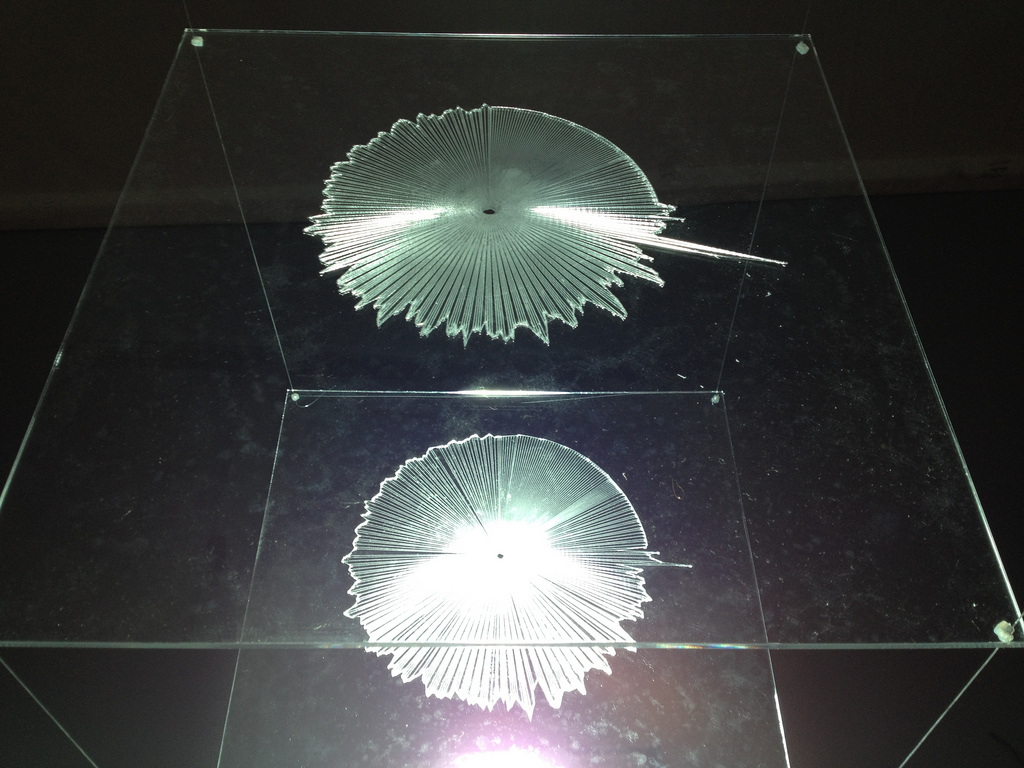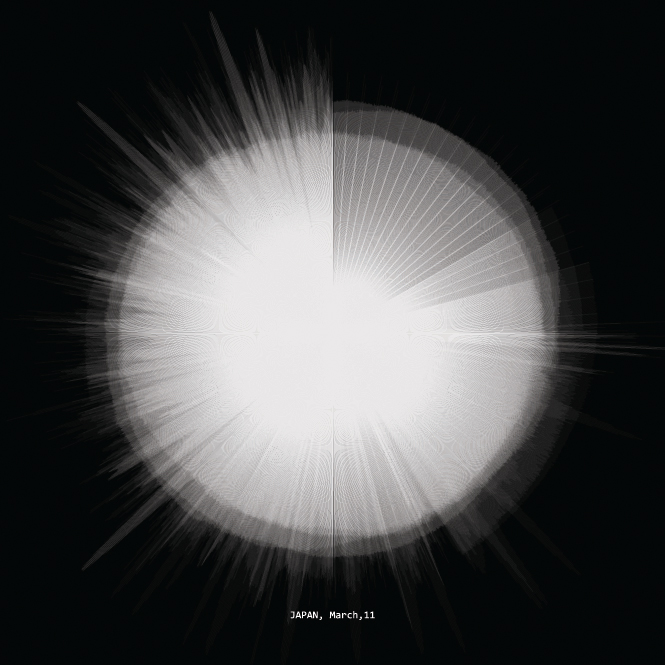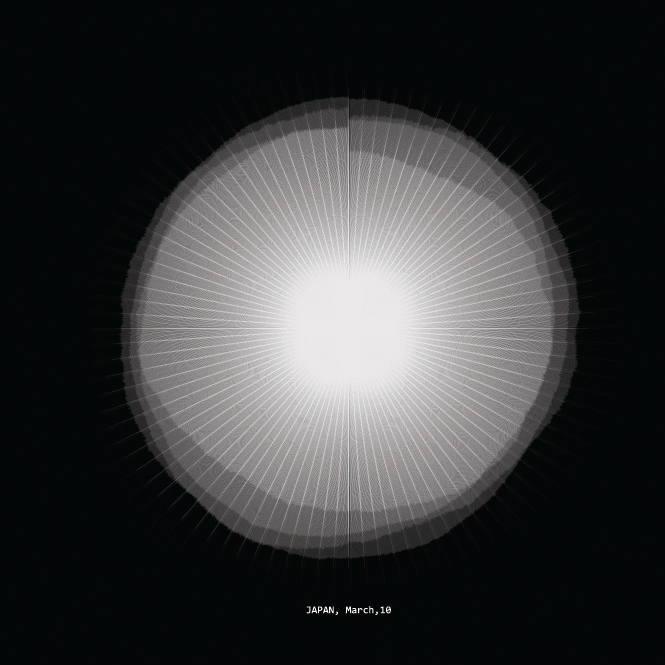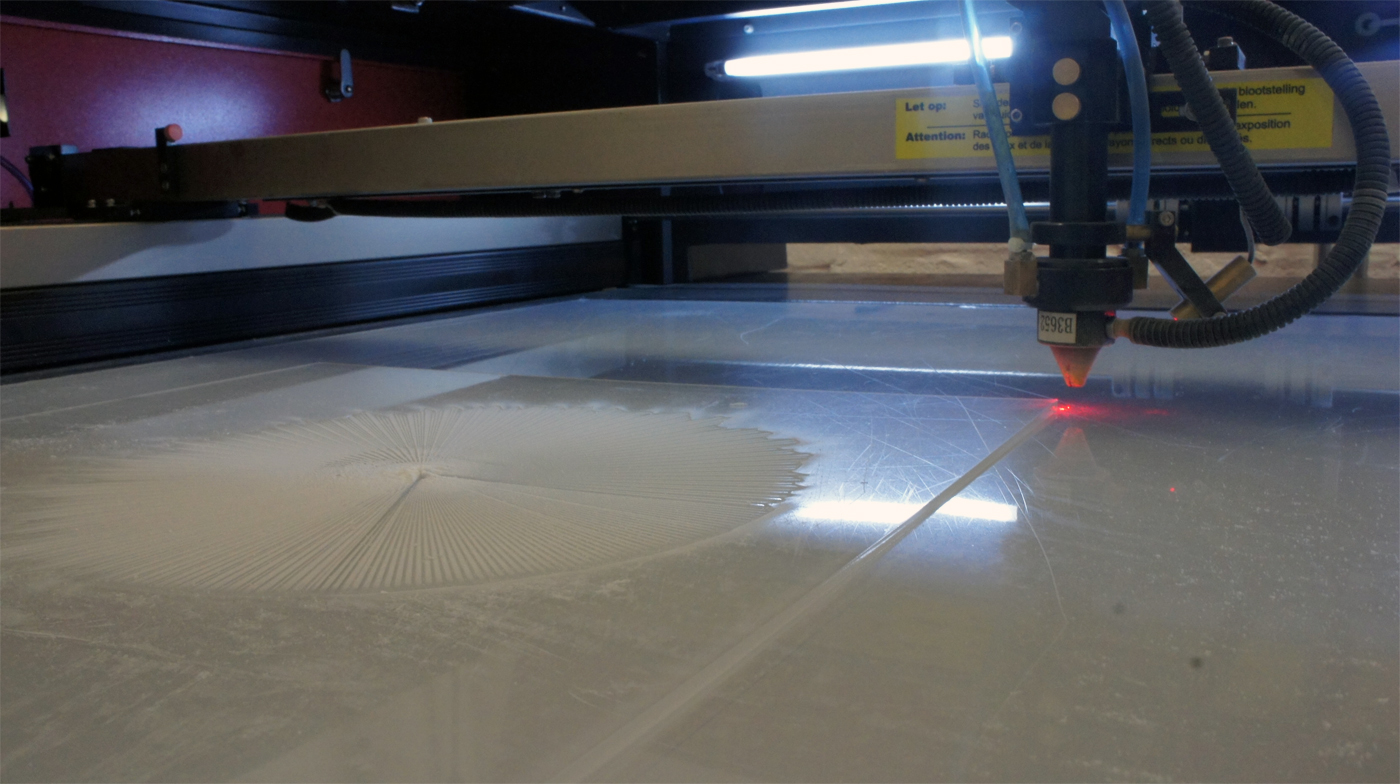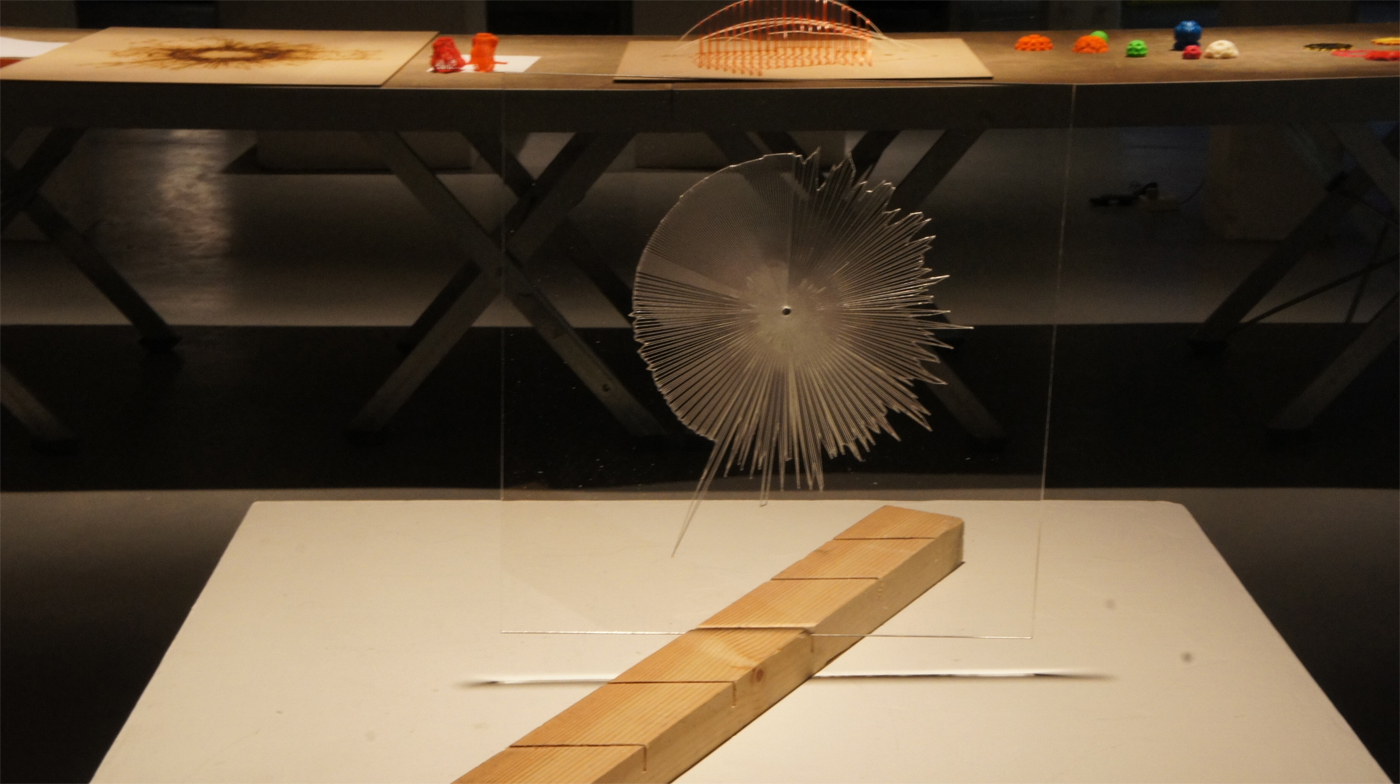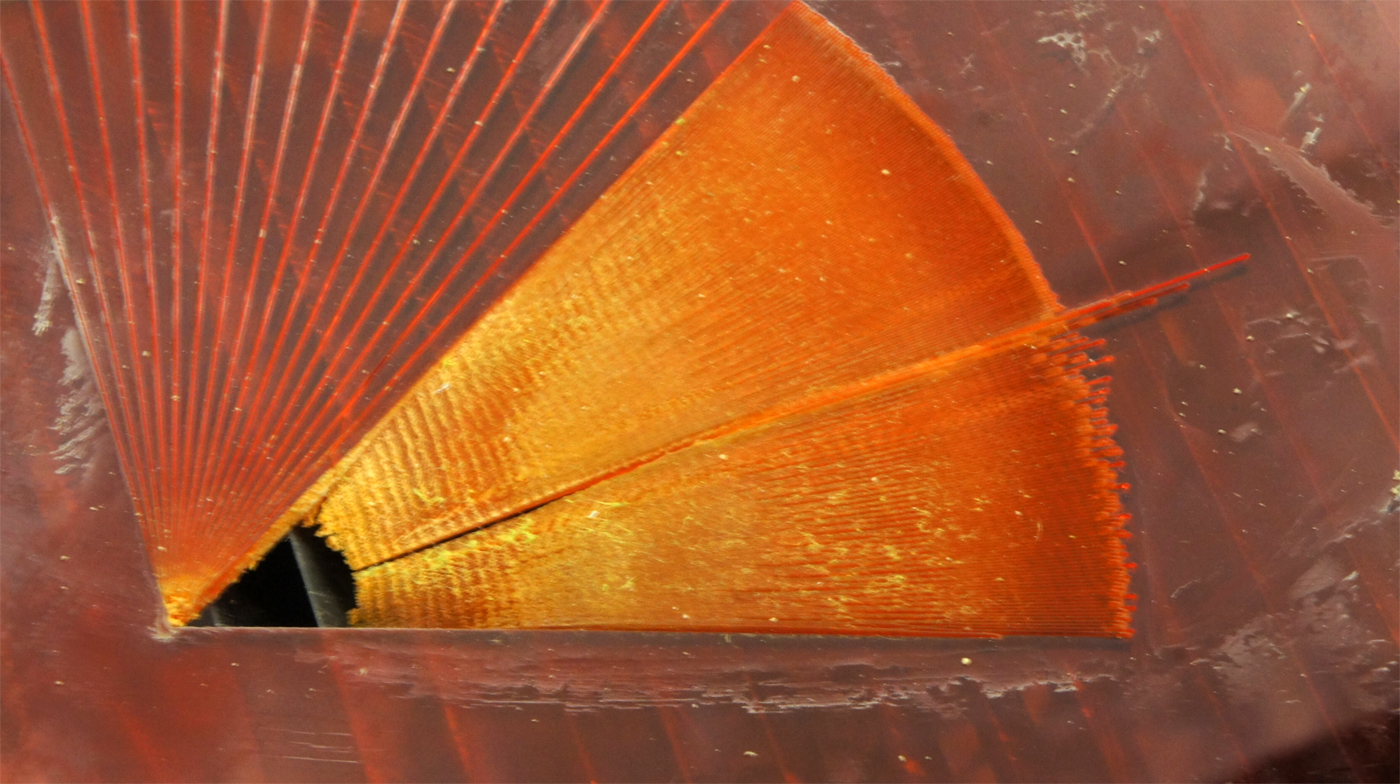Jihyun Kim
This project consists in creating a visualization of unusual natural phenomena like tsunami, tornadoes, earthquakes, floods, etc. It employs real data (e.g. satellite images, tide measurements) from hazardous events that cannot be experienced normally. People normally remember these events only by images, video or text from the mass media, and have preconceptions in mind about them: sadness, fear, pain, and so forth. What if we see these events from a different point of view? It could be meaningful to perceive these occurrences as special and unique manifestations of natural processes, which we could regard as beautiful or marvelous moments that people wish to experience in some way. This project investigates different interpretations of those events by creating new physical forms directly from the real data, with the help of digital fabrication technologies.
During the Generator.x 3.0 workshop, I explored recent DART monitoring data (Deep-ocean Assessment and Reporting of Tsunamis, from NOAA) obtained from tsunamis that occurred across the Pacific Ocean. In the work for the iMal exhibition, I especially visualize and compare the data before, during and after the Tōhoku earthquake and tsunami off the coast of Japan in March 11, 2011.
Avec ce projet, l’artiste propose, à l’aide de données réelles (images satellite, mesure des vagues), une visualisation de phénomènes naturels inhabituels, tels que tsunamis, tornades, tremblements de terre et inondations. De ces catastrophes, on garde souvent en mémoire images, vidéos et textes issus des médias de masse, ainsi qu’une série de sentiments préconçus: tristesse, peur, douleur, etc.
Ce projet propose d’aborder ces événements sous un tout autre angle, comme des manifestations spéciales et uniques de processus naturels, dans lesquelles on pourrait percevoir une certaine forme de beauté?
Grâce aux techniques de fabrication numérique, Jihyun Kim propose différentes interprétations de ces événements, créant de nouvelles formes tangibles à partir de données réelles.
Dans l’œuvre présentée ici, l’artiste a en particulier exploité les données du DART (Deep-ocean Assessment and Reporting of Tsunamis) pour visualiser et comparer les données précédant et ayant suivi le tremblement de terre et tsunami qui ont touché le Japon en mars 2011.
An archive : 1999-2010-2019
This page is an archive of the iMAL website that operated between 2010 and 2019. It compiles activities and projects made since 1999.
For our most recent news and activities, please check our new website at https://imal.org

